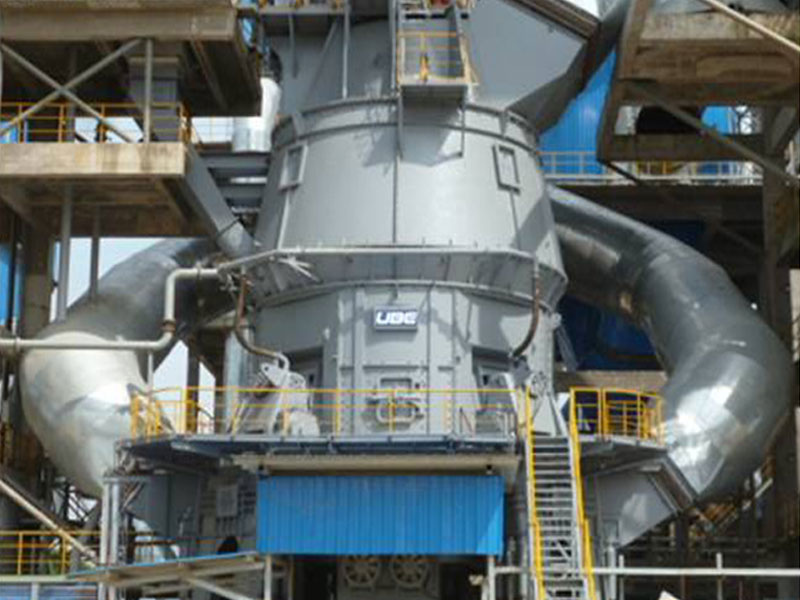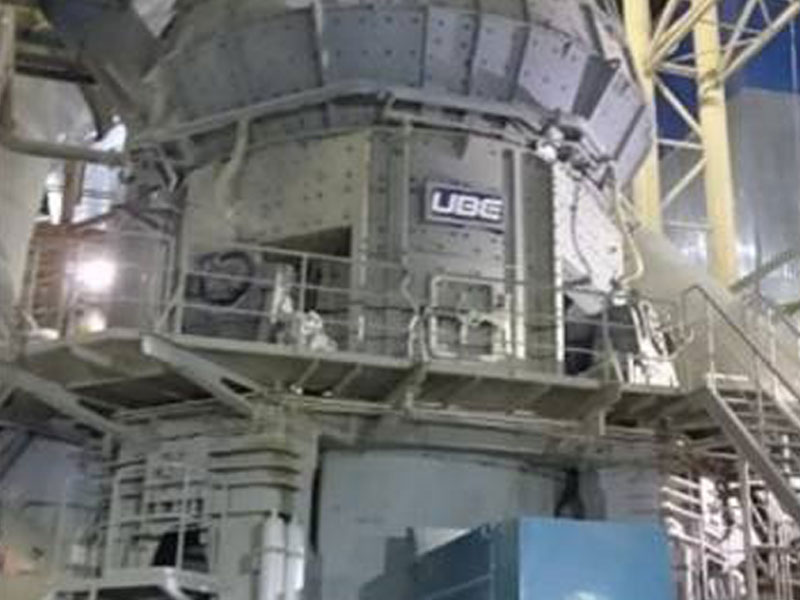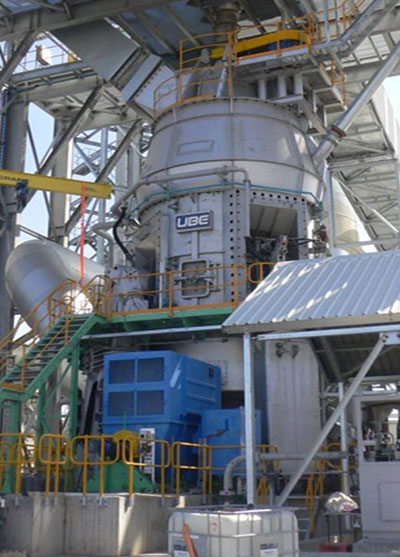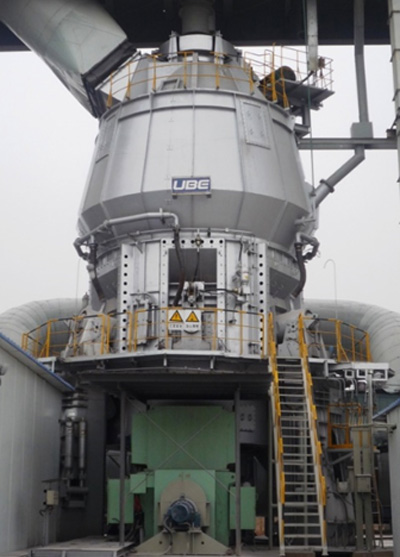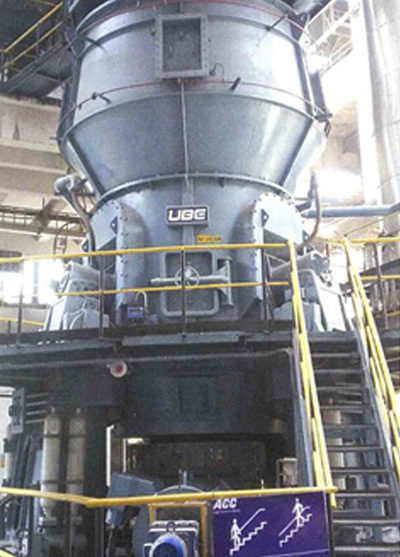Collaboration with UBE Machinery Japan
To emerge as complete grinding solution provider

In-Built Reliability for Cement Plant Application: Raw Material, Cement, Slag, Coal and Minerals.
In May 2019, AMCL signed an exclusive Licensing Agreement for the design, manufacture, erection, commissioning and after sales service with UBE Machinery Corporation, Ltd. (UBE) of VRMs in India, Bangladesh and Nepal. UBE and AMCL will cooperate to offer UBE’s cultivated technology to India in an effective manner. UBE Machinery Corporation, Ltd. (UBE) has a history of over 60 years in manufacturing VRMs. UBE has delivered over 540 VRMs throughout the world, including 20 units in India, and has received outstanding feedbacks from customers for its technology, ease of operation and maintenance, and energy efficiency. The technological developments in which UBE has focused on are “2-Way System” and its latest separator design, which realized efficiency in terms of both operation and energy.

UBE Vertical Roller Mill performs drying, grinding, classification and pneumatic transportation simultaneously.
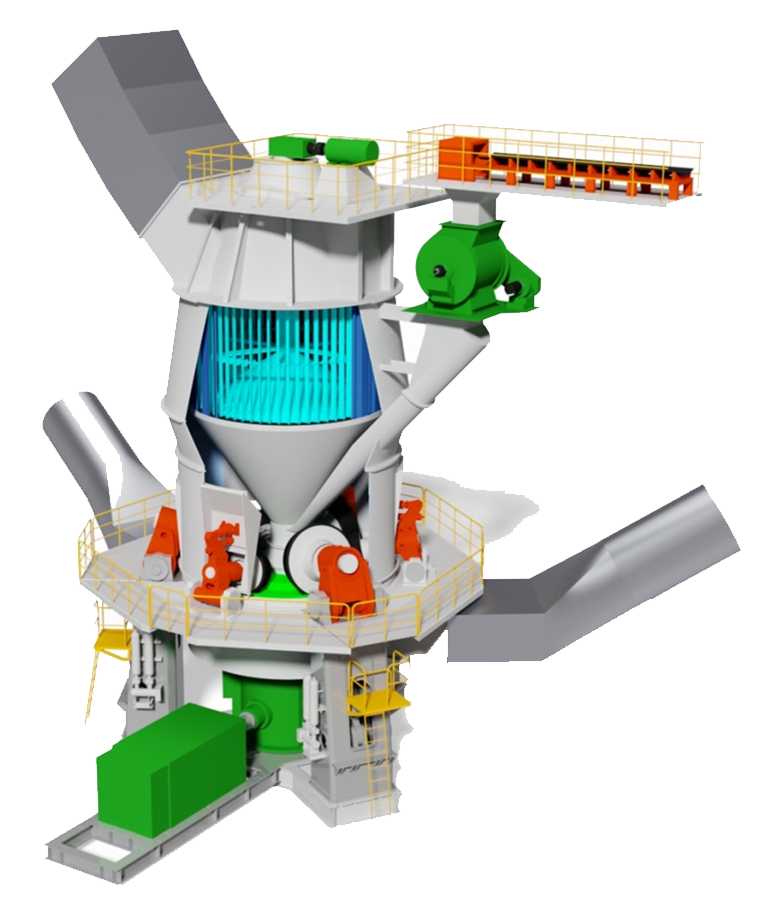
- Material is fed at a constant rate through the chute and fall into the center of table. Then the material gets carried to periphery of the table by centrifugal action and is crushed between the rotating grinding track and the grinding rollers. Grinding is carried out primarily through the vertical compressive force and the horizontal shear force. The grinding force can easily be controlled by adjusting the hydraulic pressure. A stopper is provided to avoid direct contact of the table and roller.
- As soon as ground material leaves the grinding table in the area above the nozzle ring around periphery of the Table; the water contained in the material evaporates spontaneously upon intimate contact with the stream of hot gasses directed upwards and captures the pulverized material and convey the same to the Classifier.
- Depending on the settings of Classifier; the coarse materials is rejected and falls into the return cone and then onto the grinding table for re-grinding. The product gets conveyed out of the classifier and is collected into the cyclones and Bag filters. Various particle size can be obtained easily by changing the speed of the separator rotor.
Construction of VRM
- The mill consists of the lower casing, uppercasing, table mounted on the vertical planetary gear reducer, and the grinding roller supported by the swing levers .The separator is installed at the upper parts of the mill.
- The material is fed through the rotary airlock and is ground between the Rollers and Table with the grinding force added by the hydro-pneumatic spring system which consists of the hydraulic cylinders, hydraulic accumulators and the hydraulic unit . Table is driven by the electrical motor through the high efficiency vertical planetary gear reducer. UBE mills can be equipped with two, three, four and six rollers.
Grinding Principle
Material is ground by compression force (F), impact force (I) and shear force.
1. Compressive and Impact force
Compression and impact force are the main forces of grinding action and are controlled by hydraulic pressure in the hydro-pneumatic spring system.
2. Shear force
Since the rotating center of the table does not coincide with the rotating center of the roller, a difference in rotating speed between the table and roller occurs, whereby the shear force gets generated. This force is used as fine grinding force and deagglomeration of the compressed material as well.

Special Features
- The axes of the rollers, which are inclined at 15° to the grinding bed, bring about optimum grinding and at the same time result in minimum wear.
- Use of conical roller & flat table liner gives following advanages
1. High grinding efficiency due to effective grinding forces and uniform layer of material on the table.
2. Lower vibration due to lesser shear force.
3. Lesser wear on grinding element due to lesser shear force.
4. Uniform quality of product.
Outline of Hydraulic Cylinder Operation
1. The grinding rollers are hydraulically lifted from the grinding track before the mill motor is started .and the grinding roller from the upper surface of the table.
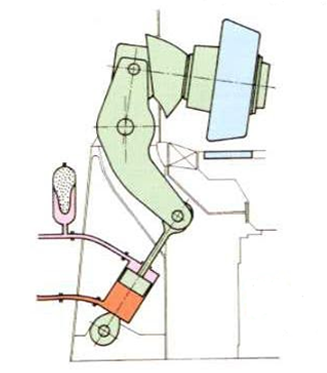
At the Start of Mill Operation
2. During the operation, the constant compressive pressure work to depress the grinding roller. The impact caused by biting the material is absorbed by the accumulator in order to protect the swing lever.
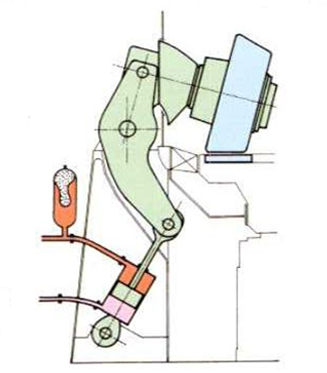
During the Operation of Mill

Latest UNKS Separator
High Separation Efficiency and smooth Gas Flow
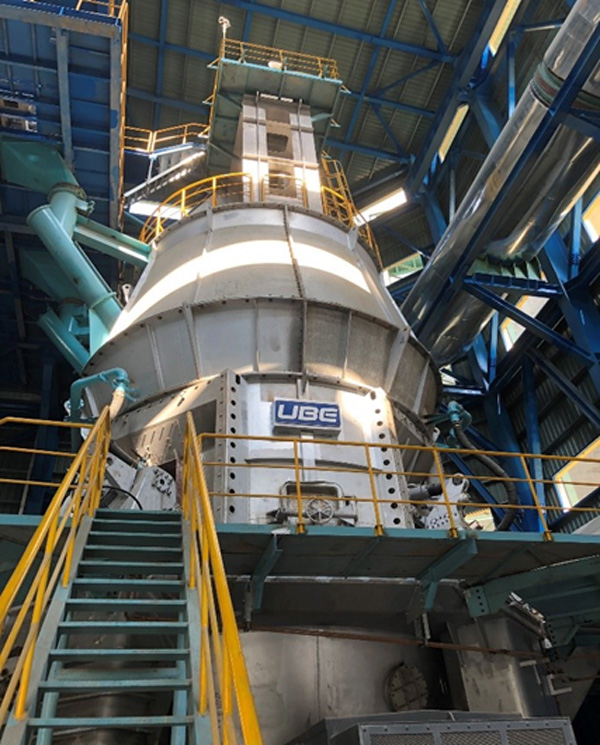
Features
- Guide vanes allow smooth gas flow.
- Pockets allow stable return of rejected material.
Benefits
- Lower pressure drop
- Lower vibration (i.e. stable operation)
- The classifier is able to operate both at high selection efficiency for a narrow particle size distribution, as well as with a wide particle size distribution.
- The dust laden gas flow rises from the mill to the area between the classifier outer wall and an internal static guide cone. It is then redirected into the annular gap between the static guide vanes that concentrically surround the rotating rotor.
- The rotor accelerates the dust laden gas tangentially. The centrifugal force generated in the process rejects the oversized particles. The rotor speed in conjunction with the direction of gas flow allows desired particle cut sizes to be set within limits.
- Rejected coarse material falls back on to the table through internal grit return cone for re-grinding.
Construction of UNKS Separator


Suitability of UBE mills for different type of materials
- For different material e.g. raw materials, coal, clinker and blast furnace slag; varying compressive grinding forces are required, with minimum shear force.
- Feed size of Granulated blast furnace slag is < 1 mm to 5 mm size. In case of clinker the feed grain size is < 1 mm to 25 mm size. The product fineness is in the range of 2 µm to 50 µm. For cement clinker and blast furnace slag ; higher compressive force is needed compared to limestone and coal.
- Very Fine material behaves like liquid and therefore de-aeration and pre-compaction is useful. For this purpose Two way grinding system has been developed by UBE for highly efficient grinding of Slag and Clinker.
Smart Features
Two Way Grinding System for Cement & Slag
Efficient Grinding and Minimum Vibration
In 1984, UBE developed the 2-Way System where de-aeration and compaction of material bed on the grinding table is achieved by sub-roller pressing thereby improving the material coefficient of friction (μ). The essential countermeasure to suppress mill vibration is to increase (improve) friction coefficient of material in the grinding area directly beneath the mill roller. Over the years UBE has well-established 2+2 and 3+3 system of Main Roller and Sub Roller for Cement and Slag grinding. As a feature of UBE’s sub rollers, they are designed to generate sufficient amount of load and are positioned near the dam ring on the circumference of the table.
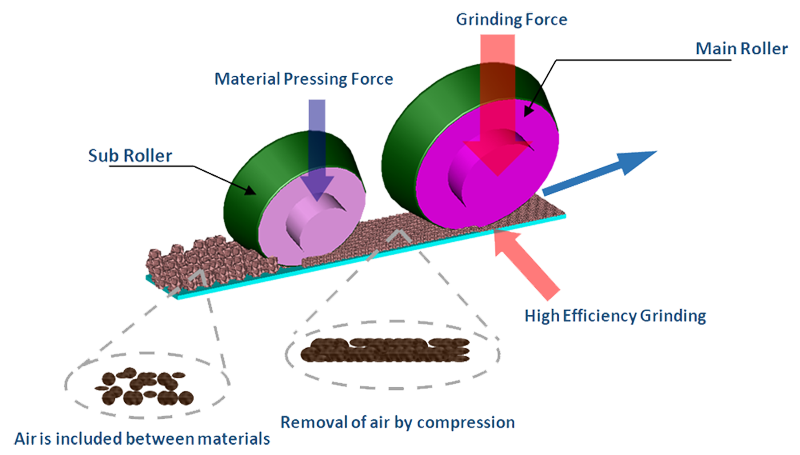
Sub-rollers: Remove the air contained in the material
Main rollers: Bite down the material without slippage
Mechanical Stopper
To avoid metal to metal Contact
Features of UBE’s sub-rollers is the fixation of gap between the sub-roller’s and the table with mechanical stoppers. From the effect of these features, the air contained in the material can be deaerated efficiently and constant height of material to be fed to the grinding rollers. This contributes to stable operation.

Roller Arrangement
Flexible and suitable for large capacity
UBE has designed the Six Roller Mill for large capacity Cement Plants. UBE has increased the number of rollers from 4 to 6 by reducing the size of rollers and by employing Two Way grinding system, which helps to refine mill structure and lowers mill weight eventually reduced the cost.

Four Roller Arrangement
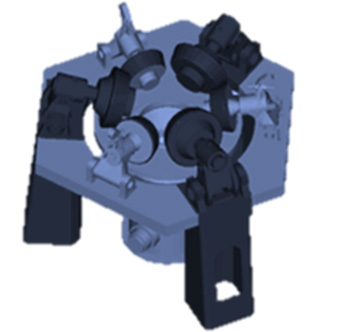
Six Roller Arrangement
Modular Design
Commonality of spares and reduce inventory cost
UBE has been designing the VRMs Rollers in accordance with Modular design concept. In other words, if roller size is same even for different table size, same roller assembly, same swing lever assembly and tension device are used. By adopting this design method, parts standardization is achieved.

Raw Mill
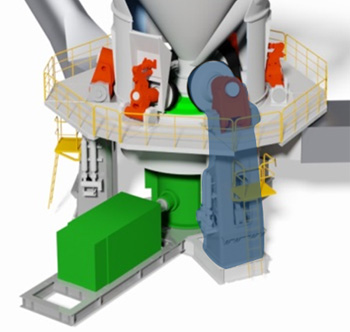
Cement Mill


Test Mill Facility at AMCL
AMCL will install test mill facilities at its workshop to determine the grindability, wear rate etc. and other material characteristic for minerals ,raw materials, coal, clinker, slag etc. to offer correct size mill to suit the customer requirement. It helps us to conduct test to understand the effect of material characteristics on throughput rate and power rating to ensures precise mill sizing.
Wide Range of Applications
Cement Plants
- Raw Material
- Clinker
- Slag
- Coal
Power Plants
- Coal
- Biomass
Steel Plants
- Coal for PCI
Fertilizer Production Plants
- Phosphate etc
Mineral Grinding Plant
Applications of VRM


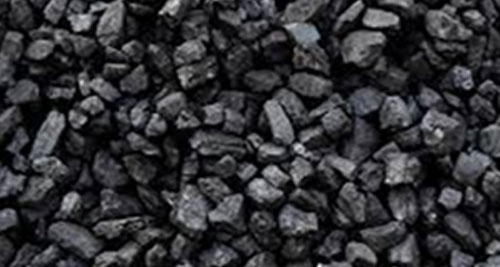
UM series mills for the Raw material grinding
Efficient grinding, drying & separation through optimized process technology
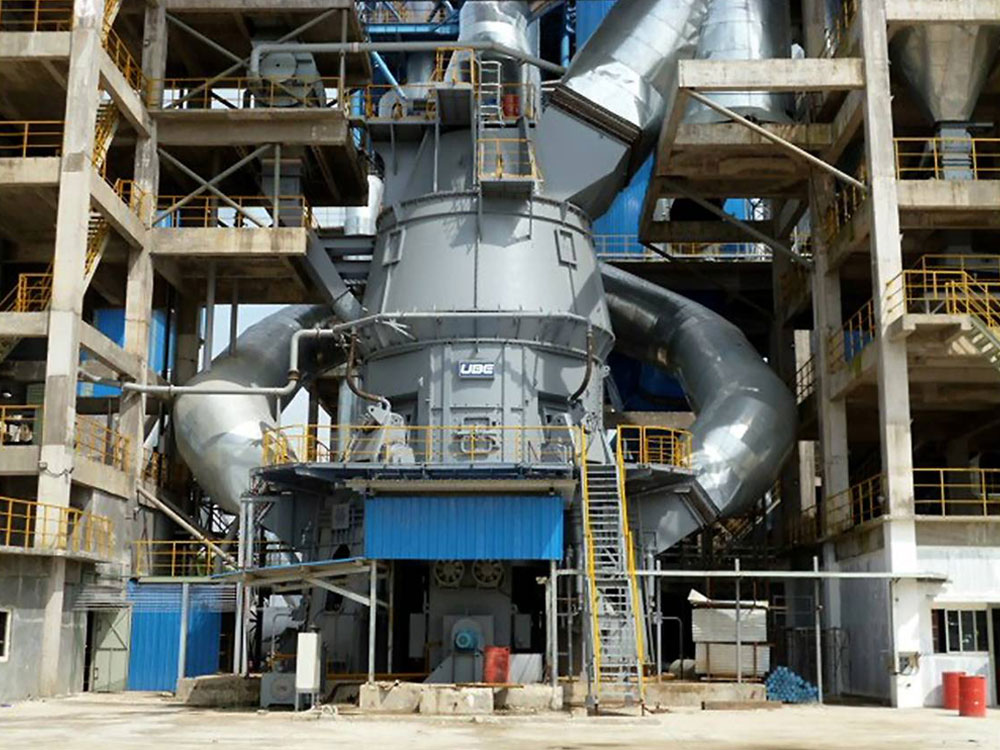
Individual large air swept Vertical Mills are preferred over ball mills for better grinding efficiency and to get an advantage in power consumption. Cement raw material is the mixture of mainly Limestone & other constituent such Iron oxide, Shale etc. having different moisture contain depending on composition & deposit. We offer the mills with optimized process technology to evaporate the moisture by employing the hot gases and intricate mill design provides efficient grinding. We offer the solution & design the mill to adapted the physical properties of material to be ground and ensure efficient operation mill without trouble.
Typical Circuit for Raw Material Grinding
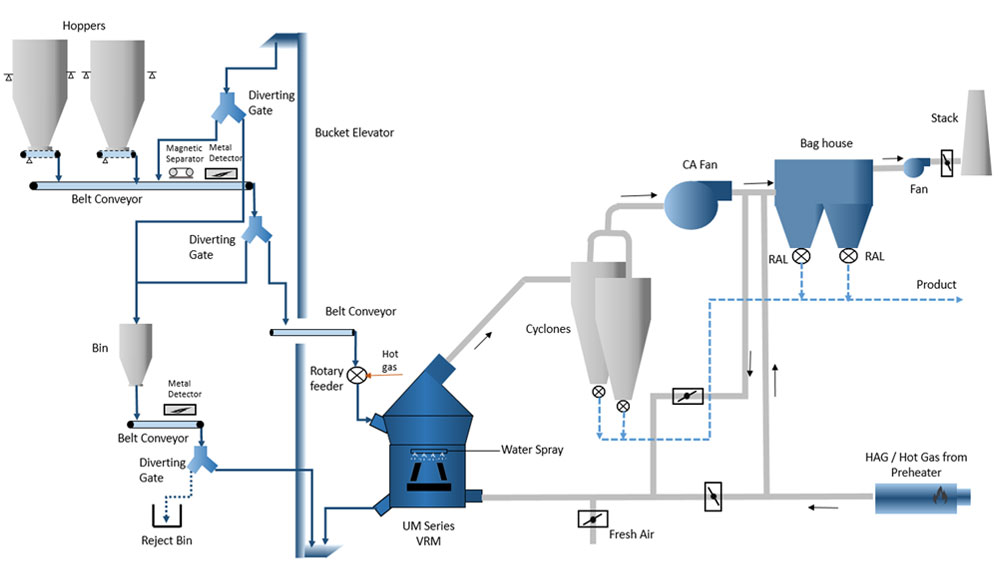
Mill Selection & Dimensions
Raw material grinding

Reference Gallery
Raw material grinding
UM series mills for the Clinker / Slag grinding
Robust, Sturdy & designed for the long run along with high grinding efficiency
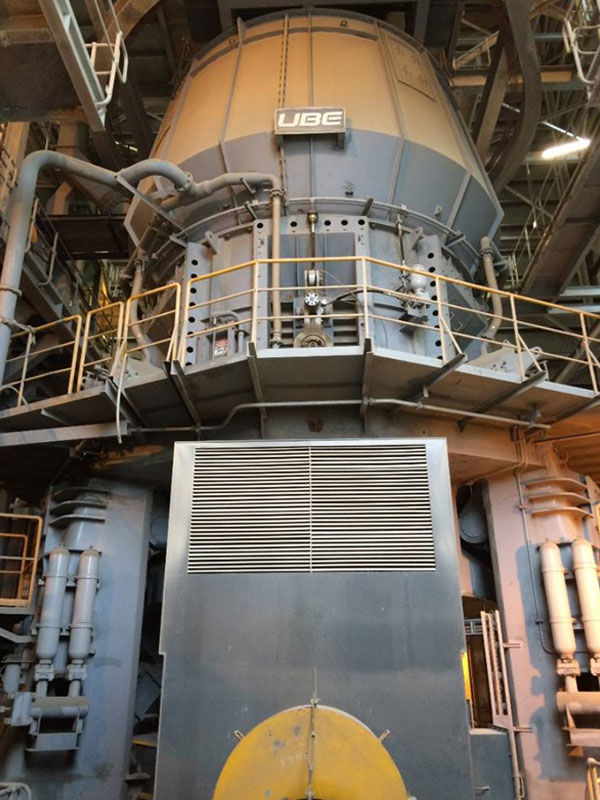
Due to the technological advancement, Vertical Mills are more preferred over ball mill so as to take an advantage of lower power consumption, flexibility in operation for the manufacturing of various composite cements, simplified circuits and lower floor area. We continuously working and capable of integrated the grinding unit in existing cement plant within limited area or offers the solution for split grinding unit. We adapt our product & processes optimally to meet individual customer requirements. We offer two way grinding system for clinker and slag grinding application to keep the mill vibration at minimum level and grind the material efficiently which eventually reduces the power consumption. Mill is offered with efficient separator to obtain required PSD’s of product and prevents unnecessary grinding of flyash which already have the required fineness.
Typical circuit for Cement grinding application
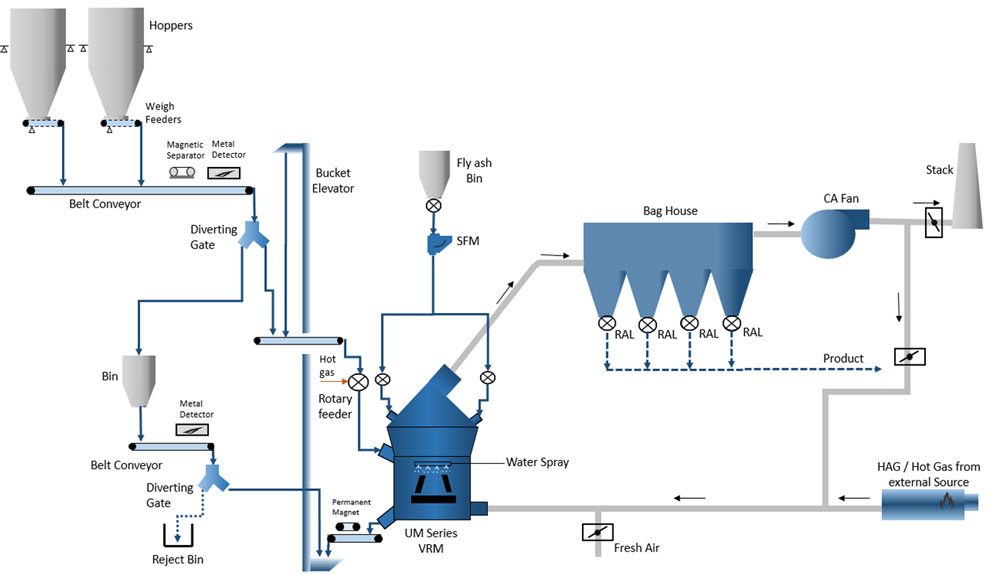
Typical circuit for Slag grinding application
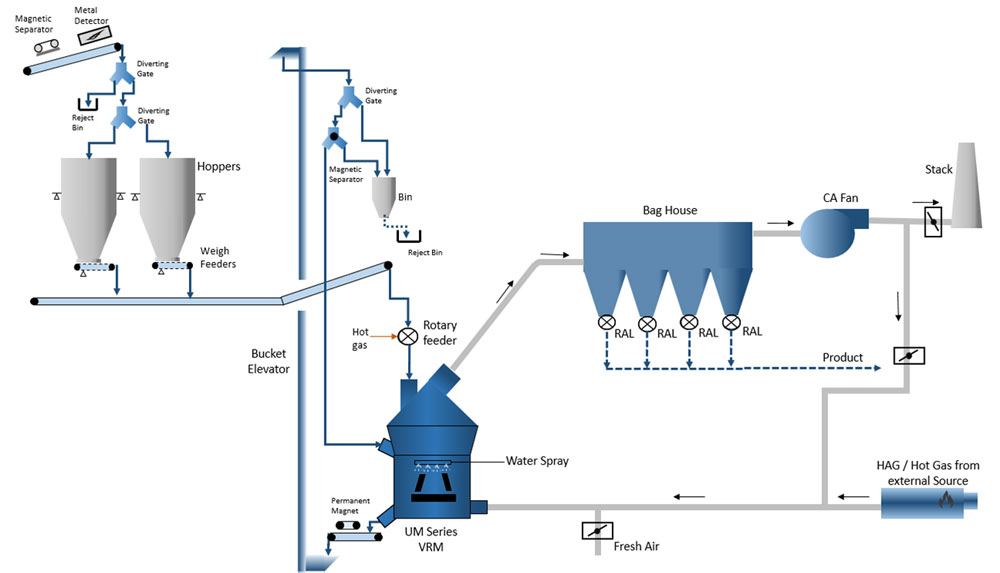
Mill Selection & Dimensions
Clinker / Slag grinding
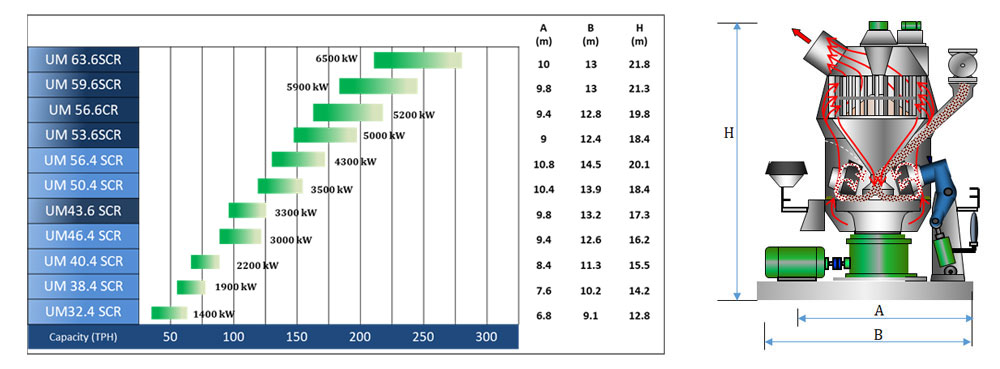
Reference Gallery
Clinker / Slag grinding
UM series mills for the Coal/ Pet Coke grinding
Ensure efficient grinding and safety


UBE’s mill design and rich experience of more than 260 Mill installation allows us to handle coal which is combustible and volatile in nature by ensuring safety and efficient grinding efficiency. UBE Mills are capable to grind and dries all the types of coal. We offers the coal mill to suited for various installation types, whether inert or non-inert. Our technology and experience to offer reliable solution and ensures the long lasting operation of mill.
Typical circuit for Coal / Petcoke grinding application
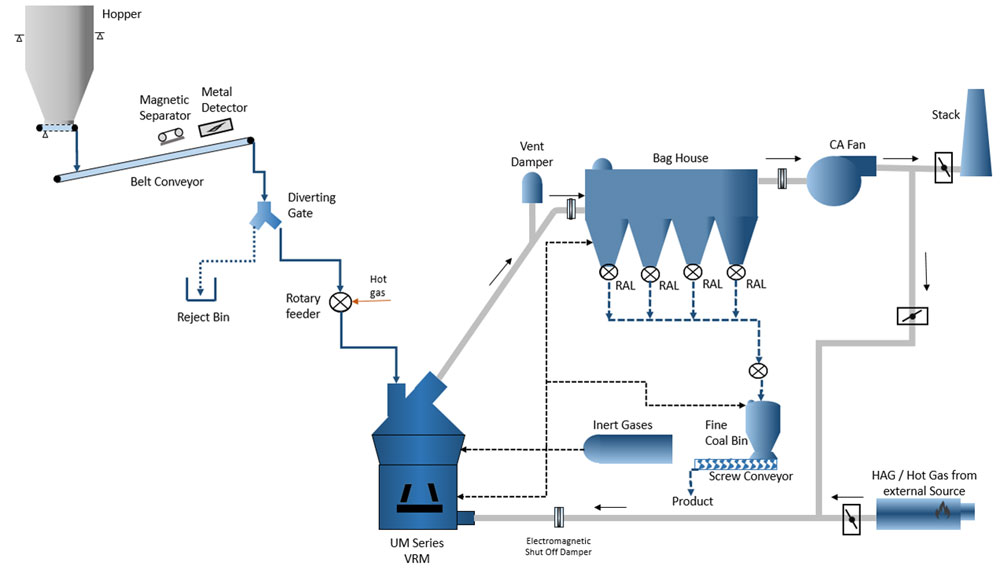
Mill Selection & Dimensions
Coal / Petcoke grinding

Reference Gallery
Coal / Petcoke grinding



